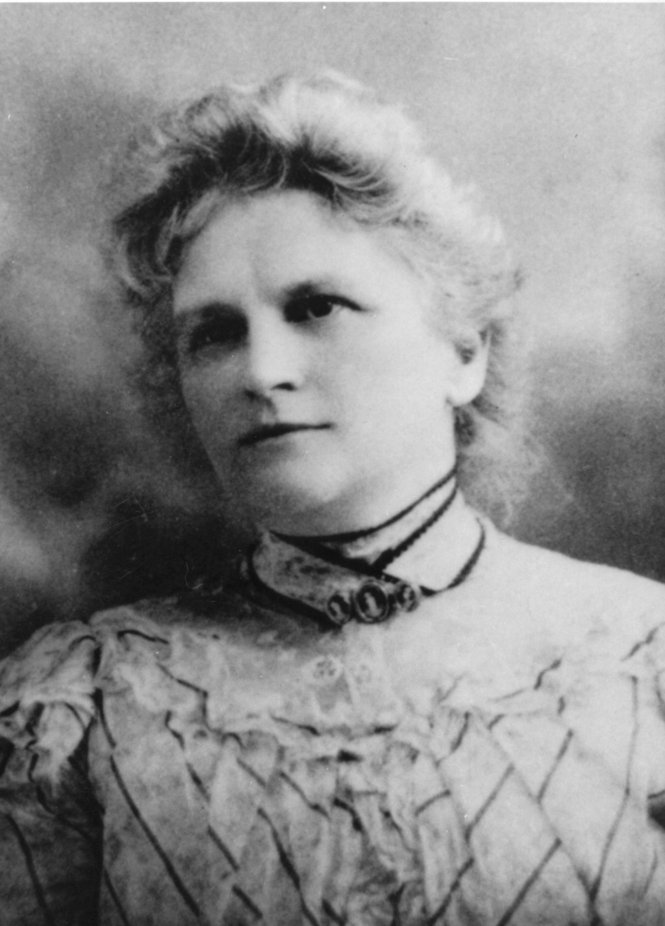31 Kate Chopin (1850 – 1904)
Amy Berke; Robert Bleil; and Jordan Cofer

Public Domain
Wikimedia Commons
Katherine O’Flaherty Chopin was born in 1850 in St. Louis, Missouri, to an affluent family. She was formally educated in a Catholic school for girls. At age twenty, she married Oscar Chopin and moved with him to New Orleans. The couple eventually relocated to Cloutierville in 1879, an area where many members of the Creole community lived. The Chopins lived, worked, and raised their six children to gether until Oscar died unexpectedly in 1882, leaving his wife in serious debt. Chopin worked and sold the family business to pay off the debt, eventually moving back to St. Louis to be near her mother, who died soon after Chopin returned. After experiencing these losses, Chopin turned to reading and writing to deal with her grief. Her experiences in New Orleans and Cloutierville provided rich writing material, and during the 1890s, she enjoyed success as a writer, publishing a number of stories in the Local Color tradition. By 1899, her style had evolved, and her important work The Awakening, published that year, shocked the Victorian audience of the time in its frank depiction of a woman’s sexuality. Unprepared for the negative critical reception that ensued, Chopin retreated from the publishing world. She died unexpectedly a few years later in 1904, from a brain hemorrhage.
In her lifetime, Chopin was known primarily as a Local Color writer who produced a number of important short stories, many of which were collected in Bayou Folk in 1894. Her ground breaking novel The Awakening published in 1899 was ahead of its time in the examination of the rigid cultural and legal boundaries placed on women which limited or prevented them from living authentic, fully self-directed lives. The novel offers a sensuous portrait of a young married woman and mother, Edna Pontellier, who awakens to herself as a dimensional human being with sexual longings and a strong will to live an authentic life, not the repressed half life she is assigned by tradition and culture, through the institutions of marriage and motherhood, to “perform.”
Though today it is viewed as an important early feminist work, the novel shocked and offended the turn of the century reading audience. It was all but forgotten until interest in the novel and in Chopin’s work in general was revived inthe 1960s. During this revival, an unpublished short story was discovered, “The Storm,” written in 1898 but not published until 1969. The story, which offers an erotic depiction of sex between a man and a woman who are not married to each other, would have been unpublishable by most, if not all, major literary magazines in late nineteenth-century America. The story’s title indicates that it was intended as a sequel to “At the ‘Cadian Ball,” first published in 1892 and reprinted in Bayou Folk. Read together, the linked stories concern two couples, one from the upper class Creoles (Alcée and Clarisse), and the other from the less prominent Acadians or Cajuns (Calixta and Bobinôt). What begins as a strong flirtation in the first story between Calixta and Alcée, both single at the time and from different social classes, culminates in torrid lovemaking years later in the second story, years after Calixta had married Bobinôt and Alcée had married Clarisse. Beyond the candid, natural depiction of sexual intimacy between the lovers during a stormy afternoon, including the scenes of a woman clearly enjoying an afternoon of passion, the story offers a non judgmental ending: no one appears to be hurt by the affair; in fact, after the storm passes, Alcée and Calixta go their separate ways, and everyone, the reader is told, is quite happy.
Content Advisory
Literature involves language, descriptions, and/or topics that may be emotionally disturbing, graphic, or otherwise sensitive in nature. These topics (or materials) are important to the course as these words, attitudes, and biases are part of American literature and provide us with opportunities to better understand our history and society.
In Kate Chopin’s work, the French Creoles are of Spanish or French descent. They are typically white and are considered members of the upper class.
In Kate Chopin’s work, the Acadians (or ‘Cadians) were of French or French- Canadian descent. They may be depicted as having a mixed racial and ethnic heritage, and they do not have the wealth and status that the Creoles have.

